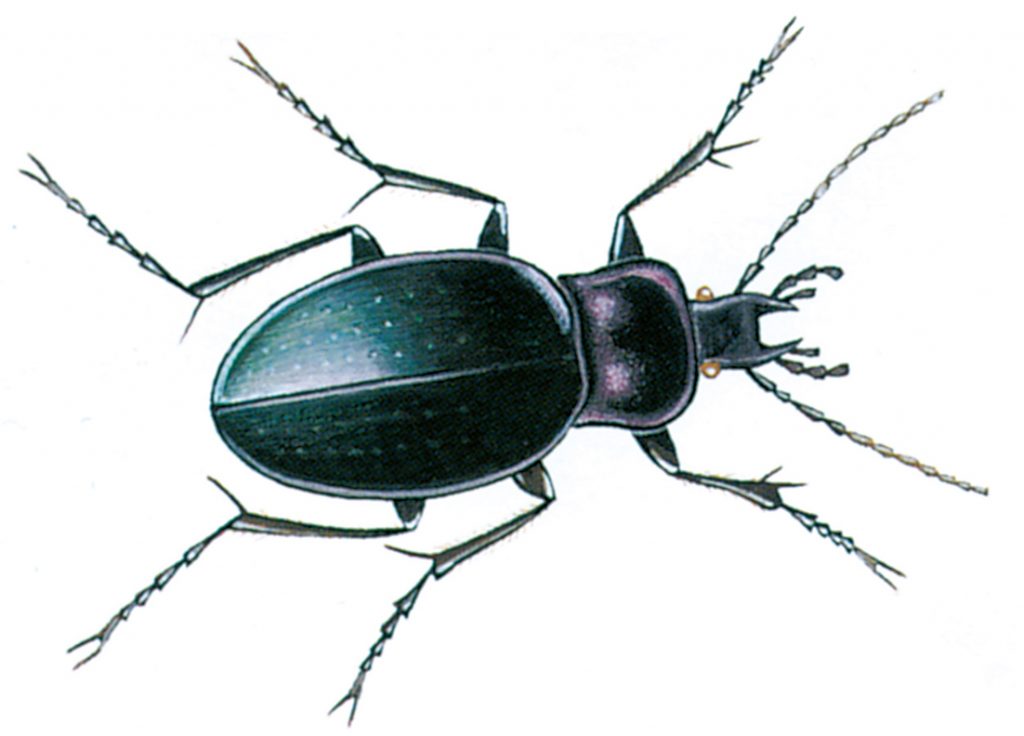(Latin: Carabus nemoralis)
Commonly known as: European ground beetle

These are fast-moving, agile beetles with powerful legs and long antennae. The species normally seen indoors are 2-3 cm long and black or brownish. Only a few of them can fly, and in some species the elytra which cover the abdomen are fused together.
Most carabid beetles are predatory, feeding on worms, slugs and insects, and some species have been released in American forests to control injurious moth larvae. These beetles handle their prey in a characteristic manner, for much of the digestive process takes place outside the animal. They regurgitate dark brown digestive juices on to the prey, which is thus paralyzed. Its tissues gradually become liquefied and this liquid is then sucked up.
Carabids or ground beetles spend the day hidden among vegetation, under stones, behind loose bark or in similar places. Several species are very common in gardens and fields, and these may find their way into houses when they are running around at night in search of food. As they prefer damp places they are frequently seen in cellars.
Some species are partly vegetarian and in rare cases these may attack vegetables and fruit, and very rarely they have been known to gnaw textiles, but by and large carabids can be regarded as quite harmless visitors.
If it feels threatened a carabid may regurgitate on to a finger, and they also have another form of chemical warfare. If one is seized it will often produce a secretion with a sharp, sour smell, which remains on the fingers for a long time. The secretion is produced by certain glands at the rear end of the abdomen; it contains various organic acids, and probably serves as a means of defence against attackers. Some mammals which normally eat insects are very sensitive to strong smells.




